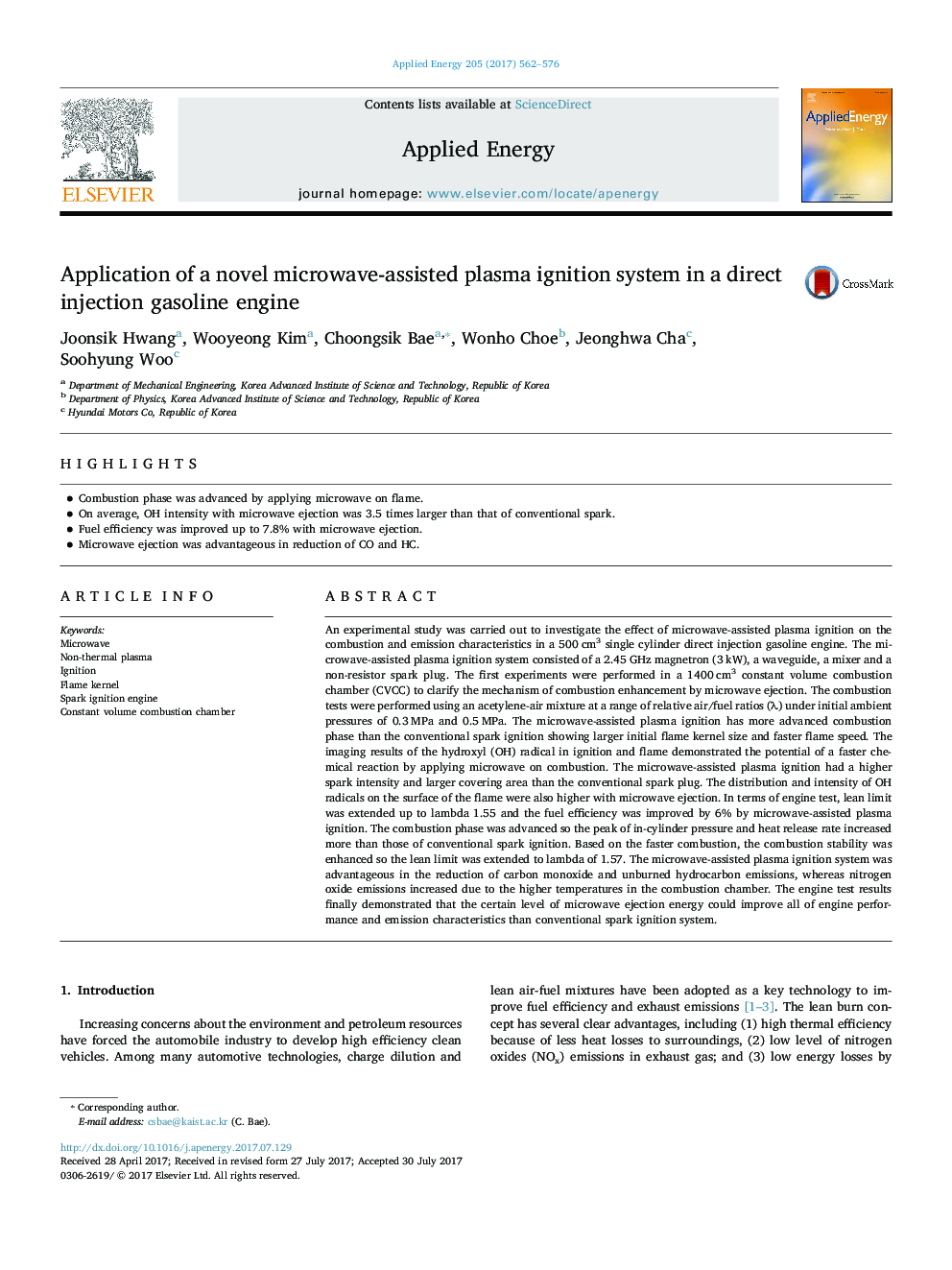| Article ID | Journal | Published Year | Pages | File Type |
|---|---|---|---|---|
| 4915868 | Applied Energy | 2017 | 15 Pages |
Abstract
An experimental study was carried out to investigate the effect of microwave-assisted plasma ignition on the combustion and emission characteristics in a 500 cm3 single cylinder direct injection gasoline engine. The microwave-assisted plasma ignition system consisted of a 2.45 GHz magnetron (3 kW), a waveguide, a mixer and a non-resistor spark plug. The first experiments were performed in a 1400 cm3 constant volume combustion chamber (CVCC) to clarify the mechanism of combustion enhancement by microwave ejection. The combustion tests were performed using an acetylene-air mixture at a range of relative air/fuel ratios (λ) under initial ambient pressures of 0.3 MPa and 0.5 MPa. The microwave-assisted plasma ignition has more advanced combustion phase than the conventional spark ignition showing larger initial flame kernel size and faster flame speed. The imaging results of the hydroxyl (OH) radical in ignition and flame demonstrated the potential of a faster chemical reaction by applying microwave on combustion. The microwave-assisted plasma ignition had a higher spark intensity and larger covering area than the conventional spark plug. The distribution and intensity of OH radicals on the surface of the flame were also higher with microwave ejection. In terms of engine test, lean limit was extended up to lambda 1.55 and the fuel efficiency was improved by 6% by microwave-assisted plasma ignition. The combustion phase was advanced so the peak of in-cylinder pressure and heat release rate increased more than those of conventional spark ignition. Based on the faster combustion, the combustion stability was enhanced so the lean limit was extended to lambda of 1.57. The microwave-assisted plasma ignition system was advantageous in the reduction of carbon monoxide and unburned hydrocarbon emissions, whereas nitrogen oxide emissions increased due to the higher temperatures in the combustion chamber. The engine test results finally demonstrated that the certain level of microwave ejection energy could improve all of engine performance and emission characteristics than conventional spark ignition system.
Keywords
Related Topics
Physical Sciences and Engineering
Energy
Energy Engineering and Power Technology
Authors
Joonsik Hwang, Wooyeong Kim, Choongsik Bae, Wonho Choe, Jeonghwa Cha, Soohyung Woo,
